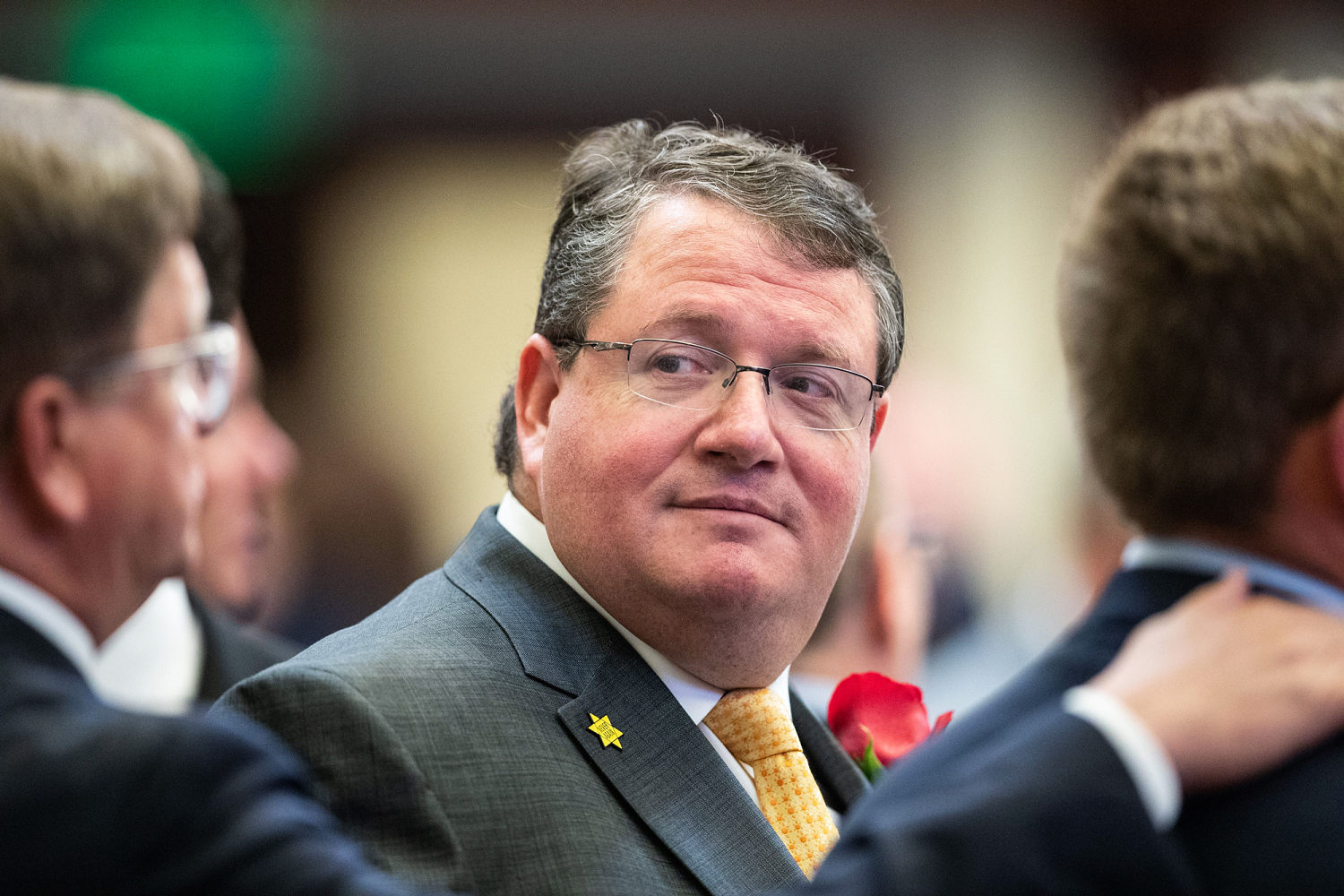Share this @internewscast.com

Welcome to the online version of From the Politics Desk, an evening newsletter that brings you the NBC News Politics team’s latest reporting and analysis from the White House, Capitol Hill and the campaign trail.
In today’s edition, Steve Kornacki dives into how Democrats may be able to cut into the GOP’s margins in a deep-red Florida House district in tomorrow’s special election. Plus, we have more key numbers to know there and in Wisconsin ahead of a big state Supreme Court race.
Sign up to receive this newsletter in your inbox every weekday here.
— Adam Wollner
Why Republicans are at risk of underperforming in a Florida special election
By Steve Kornacki
No Democrat in America won a House seat last year in a district even remotely as pro-Trump as the two in Florida where special elections will be held Tuesday.
Trump carried Florida’s 1st District by 37 points and the 6th District by 30 points in 2024, according to NBC News’ Decision Desk. The biggest margin for a Democratic-held seat that Trump won at the presidential level was 9 points, coming in Rep. Jared Golden’s 2nd District in Maine.
So a Democratic win in either Florida race would be beyond stunning. The suspense is more about whether the party can take a bite out of those giant Trump margins and claim political momentum early in his second administration.
This is particularly the case in the 6th District, where Democrat Josh Weil has outraised Republican Randy Fine by a staggering margin and where early voting has hinted at an energized Democratic base — a dynamic that has been a pattern in special elections during the Trump era. And last year’s presidential election results from the district suggest there’s plenty of room for slippage for the GOP and overperformance from the Democrats.
Much of this is due to the growth in Trump’s support from nonwhite voters, many of whom were younger and first-time voters without a history of participating in lower-turnout special elections. In November, they helped boost Trump’s margin in Florida’s 6th District by 6 points, from 24 points in 2020 up to 30. The two places where Trump gained the most new ground are significantly less white and less affluent than the district as a whole.
In Florida’s 6th District, Trump’s gains with nonwhite voters seem to have come in both heavily Latino and heavily Black areas. In precincts that are majority Black, he cut the Democratic margin from 53 points in 2020 down to 41, a 12-point improvement. The biggest single precinct-level shift toward Trump in the district (a net-gain of 57 points) came in a precinct that is 52% Black.
A key question that emerged from 2024 is whether these types of gains are sustainable for Republicans without Trump on the ballot. Add in the lower-profile nature of this election and the task becomes that much tougher.
Meanwhile, Trump’s gains were minimal in areas with higher concentrations of white, college-educated and affluent voters. It is among this demographic mix that Democrats have found their most energized supporters nationally during the Trump era. And given that turnout will be much lower on Tuesday than in November, an exercised cohort of anti-Trump, college-educated, white voters could punch well above its weight. The district also has plenty of retirees, and in areas where the average age is over 55, Trump only gained about two points last November.
This might not all add up to a Democratic win, but it could knock some points off that 30-point Trump margin.
Stay tuned tomorrow for Steve’s breakdown of the key areas to watch in Wisconsin for the state Supreme Court election.
Tuesday’s elections by the numbers
By Ben Kamisar, Bridget Bowman, Macklin Fishman, Adam Edelman and Scott Bland
Outside of the Florida special elections, a state Supreme Court race in Wisconsin on Tuesday will also have major national implications.
Here are the key numbers to know that have shaped these elections.
A deluge of TV ads: The vast majority of the $80 million-plus spent since Jan. 1 on TV in these off-year elections has been in Wisconsin, where the contest between two state judges, Susan Crawford and Brad Schimel, has been the most expensive state Supreme Court race in history, surpassing Wisconsin’s 2023 campaign.
Wisconsin has seen more than $70 million in TV ads on the court race (plus a bit more on other races on the ballot), according to the ad-tracking firm AdImpact. Meanwhile, the special election in Florida’s 1st District has seen $3.4 million in ads, and the one in the 6th District has seen $6.2 million through Election Day.
Elon Musk’s spending: Billionaire White House adviser Elon Musk has played a major role in the uptick in spending in the Wisconsin Supreme Court race.
Musk’s super PAC, America PAC, has spent $12.2 million and counting to boost Schimel. Musk also donated another $3 million to the state Republican Party. And he gave away million-dollar checks to petition signers at a recent event in Wisconsin ahead of Tuesday’s elections.
Meanwhile, another group with links to Musk, the nonprofit Building America’s Future, has also spent $4.8 million in Wisconsin. (It’s unclear whether Musk is currently supporting that group.)
The biggest liberal-aligned group in the Wisconsin race has been A Better Wisconsin Together, which has spent $8.4 million to benefit Crawford.
Musk’s America PAC has also gotten involved in Florida, but with far smaller sums, dropping nearly $100,000 on phone calls and texts in the two races, according to filings with the Federal Election Commission.
Elon Musk’s posting: Musk isn’t just pouring money into the race; he’s been talking a lot about it, too.
He has posted or reposted 73 times on his X platform about the Wisconsin Supreme Court race this year, as of midday Monday. Most of those posts came in recent weeks, as his money and involvement in the campaign have become a central theme.
That’s all From the Politics Desk for now. Today’s newsletter was compiled by Adam Wollner and Bridget Bowman.
If you have feedback — likes or dislikes — email us at politicsnewsletter@nbcuni.com

















